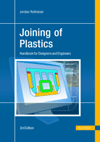Carbon-fiber composites offer numerous benefits to automotive manufacturers, such as weight reduction. However, they pose a wide variety of joining challenges to engineers, who must choose between mechanical fastening or adhesive bonding. Each assembly process has many pros and cons that must be evaluated.
Fasteners are a popular alternative, because strength is quite predictable vs. bonding and they require no time to cure or set. Threaded joints can also be serviced easily. But, many fastening issues still need to be addressed.
“Carbon-fiber parts consist of a lot of strings, but little resin holding it all together,” notes Ken Gomes, vice president of engineering and product development at Research Engineering & Manufacturing Inc. (REMINC). “As a result, they are prone to crumbling and flaking, which makes it hard to drive fasteners with high torque.
“Creep and fatigue at point-loading areas still need to be addressed by the auto industry,” adds Gomes. “Putting components in tension is not a good situation, because of the creep factor. However, inserts can help address this issue.”
“We are seeing growing interest in carbon-fiber composites in the United States, but there’s been more activity so far in Europe,” says Gene Simpson, vice president of quality and engineering at Semblex Corp. “I expect to see more interest in the future for applications such as pillars and panels.
“Composites can be a very unforgiving material to fasten,” notes Simpson. “The consistency and strength of the composite structure are issues that engineers must tackle. Once you insert a fastener into a composite, you run the risk of damaging the matrix resin structure of the material.”
Engineers must be careful what type of fasteners they choose to join composites, says George Ritter, principal material engineer at EWI, the leading North American authority on materials joining and applied technologies for the transportation industry.
“Self-piercing rivets or clinching are not too compatible with composites, which means holes may be necessary in the composite for a pass-through,” warns Ritter. “Drilling composite is a fairly slow and expensive process with high tool wear. The holes are counterproductive mechanically because they produce point- load stress concentrations.”
“Avoiding delamination of carbon-fiber composite around holes [is critical],” says Jon Brewer, principal engineer at Infastech, which recently embarked on an R&D project with Jaguar Land Rover. “For blind rivets or threaded inserts, a large blind footprint is preferred. Radial expansion or ‘hole-fill’ from a fastener may be a problem if excessive enough to cause delamination.”
Brewer says corrosion can be a serious concern if carbon fibers are in direct contact with metal fasteners in corrosive environments. He recommends A4 stainless steel as a good, albeit expensive, fastening material solution.
“We’ve seen interest in blind rivets with a large rear footprint in diameters from 4.8 to 6.5 millimeters and threaded inserts typically M5 or M6 for nonstructural fixings,” notes Brewer. “We are expecting to use a lot of our stainless steel Avinox XT products in the VARCITY project. Its versatility, high structural integrity, wide grip range and large blind-side bulb make it ideally suited [to carbon-fiber composites].
“Finishes and performance coatings are [also] important in the selection process to avoid corrosion between carbon-fiber composites and metal fasteners,” says Brewer. “Products like Acu coat, our ultra high performance coating for threaded fasteners, high-corrosion zinc-nickel finishes, and certain organic coatings would all be preferred, along with passivated stainless-steel fasteners.”





